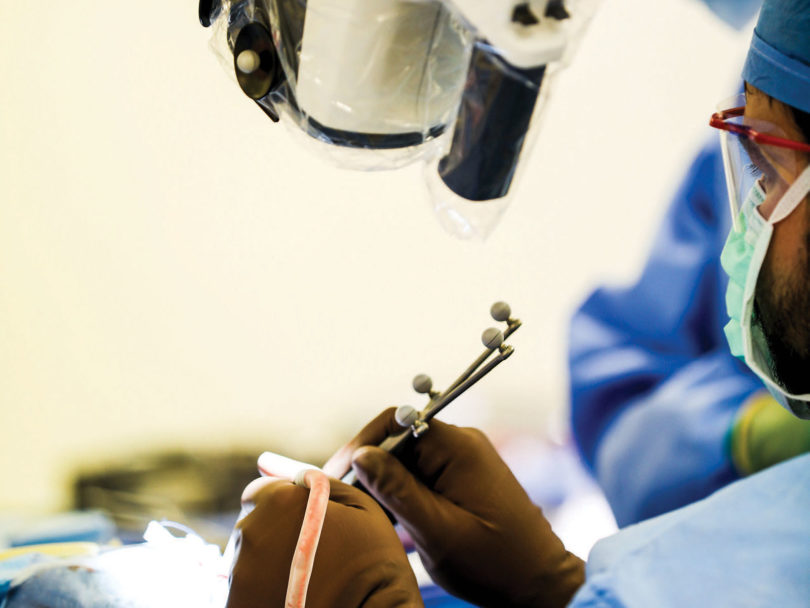As far as surgeries go, brain surgery might be the oldest of the practiced medical arts, with evidence of its use going back thousands of years B.C.E., even to the late Stone Age period.
Pre-Incan civilizations, who used surgical tools made of sharp-edged volcanic rocks, could not have possibly envisioned brain surgery in the 21st century, when doctors use robots and 3D navigation.
One of the latest advancements to hit the field of neurosurgery is the use of real-time surgical navigation systems that use robotic arms developed from technology used on the International Space Station. The equipment allows surgeons to navigate around critical structures when removing brain tumors and operating deep into the brain.
This “next-generation” technology went into action at Bon Secours DePaul Medical Center in Norfolk, Va., in May. It’s the first hospital in Hampton Roads and the second in Virginia to use the new, BrightMatter navigation system from Synaptive Medical Inc., a Toronto-based medical technology company.
Dr. Joseph Koen is one of two doctors at DePaul — along with Dr. David Waters — trained on the BrightMatter system. Koen’s first case using the equipment, on a woman with a brain tumor, was successful.
“It went very, very nicely,” Koen says, with the patient recovering well.
The BrightMatter technology assists surgeons in a few different ways. First, it uses a specialized MRI scan to map the brain’s sensitive white matter tracts. The approach gives surgeons a dynamic 3D visualization of the brain that allows for less-invasive surgery and safer surgical routes. By allowing the surgeon to devise a precise surgical plan, the surgery can start “in a more focused way,” Koen says. It may also allow surgery in cases previously deemed inoperable.
During surgery, the 3D image of the brain is projected on a computer monitor, where it highlights all the fibers in the brain— the tracts that connect the parts of the brain — in different vivid colors. “It allows us to peer inside the brain in the way we never have before,” Koen says. Lesions, or tumors, can be spotted because they push the tracts out of normal position.
Meanwhile, the surgeon uses a specialized instrument — either a probe or an instrument that provides suction — that connects to a surgical robotic arm, called the Modus V. The robotic arm has a high-powered digital microscope that allows the surgeon to see the surgical field in real-time, magnified 12½ times on a 55-inch television screen near the operating table. As the surgeon works inside the brain, the camera automatically aligns to the instrument, keeping the field always in focus.
“This can get into those tough angles for them,” says Gianna Lenzo, a clinical applications specialist for Synaptive Medical. Normally, a surgeon would have to keep checking on the surgical field through a microscope with oculars. “This allows more freedom of movement, and I don’t have to take my hands out of the field,” Koen says. The whole process cuts down on operating time.
The BrightMatter system can be used on many types of brain surgeries, including tumors, hemorrhages, vascular malformities and cysts.
In the future, it may be able to be used on aneurisms, Koen says. It can also be used for spine surgery — Koen’s second patient at DePaul using BrightMatter was a man needing back surgery.
There are about 30 medical institutions using the BrightMatter technology and the Modus V robotic arm.
“This equipment is incredible,” says Paul Gaden, chief executive officer at DePaul, where the Bon Secours Neuroscience Institute is located. “We’re always looking for technologies that improve the lives of our community members.”







